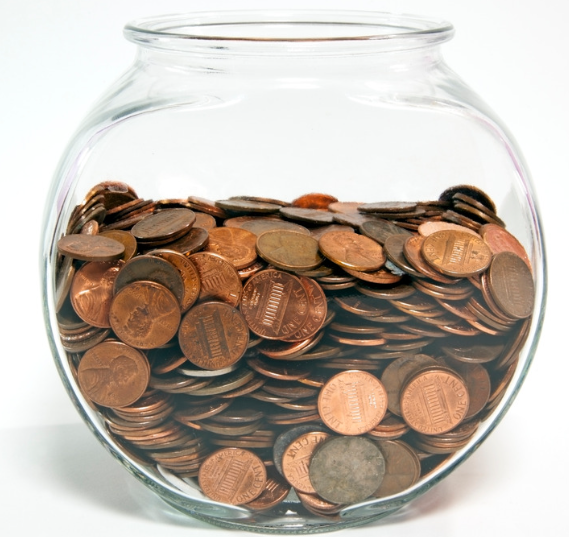Zinc Toxicity
Zinc toxicity is a serious and potentially life-threatening condition in pets, most commonly caused by the ingestion of metal objects—particularly coins. While foreign body ingestion is a frequent issue in veterinary medicine, coins pose a unique danger because of their chemical composition.
Overview of Zinc Toxicity
Zinc becomes toxic when ingested in large amounts. Once inside the body, it can damage red blood cells, the gastrointestinal lining, the liver, kidneys, and pancreas. The acidic environment of a pet’s stomach can rapidly dissolve zinc-containing metals, releasing zinc ions that are absorbed into the bloodstream. This can lead to a range of systemic complications.
High-Risk Items: Pennies and Other Zinc Sources
In the United States, pennies minted after 1982 are composed of 97.5% zinc, with only a thin copper coating. These coins are particularly dangerous when swallowed, as the stomach acid quickly corrodes the copper shell and exposes the zinc core.
Pennies from before 1982 are primarily copper and pose much lower risk.
Other sources of zinc include zinc oxide creams (like diaper rash ointments), galvanized hardware, metal game tokens, and some small batteries or costume jewelry.
Species Most Commonly Affected
Dogs are the primary species affected, particularly young or indiscriminate eaters.
Cats are less likely to ingest metal objects but can still be exposed.
Birds and small mammals may develop chronic zinc toxicity from environmental sources like cages or toys, but this is not typically related to coin ingestion.
Clinical Signs of Zinc Toxicity
Symptoms usually develop within a few hours to several days of ingestion. Common signs include:
Vomiting
Loss of appetite
Lethargy or weakness
Pale or yellow gums
Orange-tinged or dark urine
Diarrhea
Rapid heart or respiratory rate
Collapse in severe cases
These signs result from hemolytic anemia (destruction of red blood cells), gastrointestinal inflammation, and organ dysfunction.
What to Do If your Pet is Exposed
If you believe your pet has swallowed a coin or any zinc-containing item, contact your veterinarian and/ or animal poison control immediately.
ASPCA Animal Poison Control Center: 888-426-4435
Available 24/7
Veterinary Diagnosis and Treatment
Veterinary care should be sought immediately if a pet is suspected of swallowing a coin or other zinc-containing object.
Diagnostics may include X-rays to confirm the presence of metal, along with bloodwork to evaluate red blood cells, organ function, and zinc levels.
Treatment often involves endoscopic or surgical removal of the object, followed by aggressive supportive care. This may include IV fluids, medications for nausea and inflammation, and blood transfusions in severe cases.
Prevention Tips
Keep coins, jewelry, hardware, and medications out of reach of pets.
Store bags, backpacks, and laundry off the floor to prevent access.
Educate children in the household about the danger of leaving coins or small objects around.
Avoid using galvanized or zinc-coated materials in pet enclosures or habitats.
Final Thoughts
While a swallowed coin may seem harmless at first glance, zinc toxicity can progress quickly and become life-threatening. Early recognition and prompt veterinary care are critical. By understanding the risks and taking steps to prevent access to zinc-containing items, pet owners can help protect their animals from this serious and entirely preventable condition.


